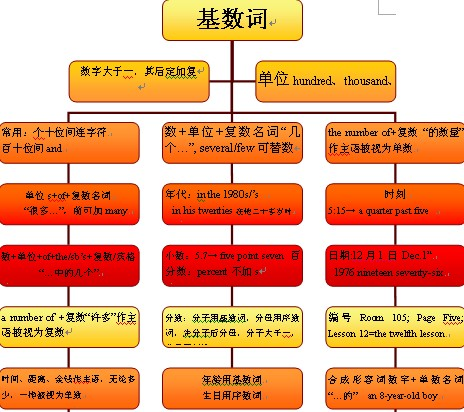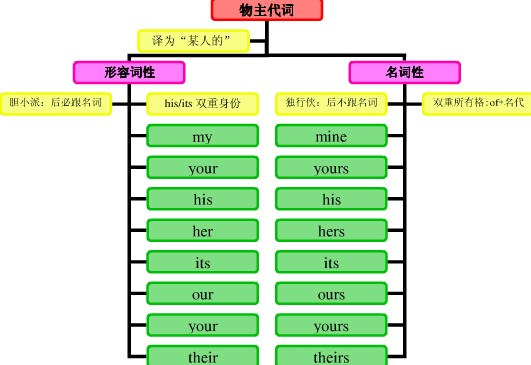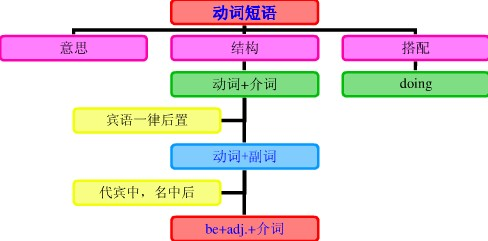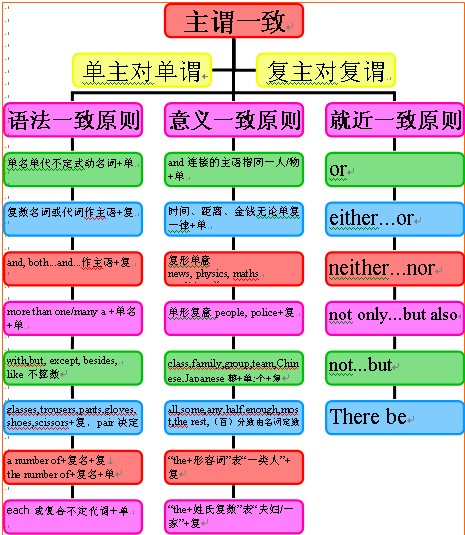本试题 “短文改错。假如英语课上老师要求同学们交换修改作文,请你修改你同桌写的以下作文。文中共有10处语言错误,要求你在错误的地方增加、删除或修改某个单词。增...” 主要考查您对可数名词及其单复数
不定冠词
基数词
物主代词
形容词
并列连词
动词的第三人称单数
动词短语
动词
主谓一致
等考点的理解。关于这些考点您可以点击下面的选项卡查看详细档案。
- 可数名词及其单复数
- 不定冠词
- 基数词
- 物主代词
- 形容词
- 并列连词
- 动词的第三人称单数
- 动词短语
- 动词
- 主谓一致
可数名词:
是指能以数目来计算,可以分成个体的人或东西;因此它有复数形式,当它的复数形式在句子中作主语时,句子的谓语也应用复数形式。
可数名词复数的规则变化:
| 情况 | 构成方法 | 读音 | 例词 |
| 一般情况 | 加 –s | 1.清辅音后读/s/; 2.浊辅音和元音后读/z/; |
map-maps bag-bags car-cars |
| 以s,sh,ch,x等结尾的词 | 加 -es | 读 /iz/ | bus-buses watch-watches |
| 以ce,se,ze,(d)ge等结尾 的词 |
加 -s | 读 /iz/ | license-licenses |
| 以辅音字母+y结尾的词 | 变y 为i再加es | 读 /z/ | baby-babies |
1)以y 结尾的专有名词,或元音字母+y结尾的名词变复数时,直接加s变复数:
如:two Marys the Henrys monkey---monkeys holiday---holidays
比较:层楼:storey---storeys story---stories
2)以o 结尾的名词,变复数时:
a. 加s,如: photo---photos piano---pianos
b. 加es,如:potato--potatoes tomato--tomatoes
c. 均可,如:zero---zeros / zeroes
3)以f或fe 结尾的名词变复数时:
a. 加s,如: belief---beliefs roof---roofs safe---safes gulf---gulfs;
b. 去f, fe 加ves,如:half---halves knife---knives leaf---leaves wolf---wolves wife---wives life---lives thief---thieves;
c. 均可,如:handkerchief: handkerchiefs / handkerchieves
可数名词复数的不规则变化:
1)child---children foot---feet tooth---teeth mouse---mice man---men woman---women
注意:与 man 和 woman构成的合成词,其复数形式也是 -men 和-women。
如:an Englishman,two Englishmen. 但German不是合成词,故复数形式为Germans;Bowman是姓,其复数是the Bowmans。
2)单复同形 如:
deer,sheep,fish,Chinese,Japanese
li,jin,yuan,two li,three mu,four jin
但除人民币元、角、分外,美元、英镑、法郎等都有复数形式。如:
a dollar, two dollars; a meter, two meters
3)集体名词,以单数形式出现,但实为复数。
如:staff people police cattle 等本身就是复数,不能说a staff a people,a police,a cattle,
但可以说a person,a policeman,a head of cattle, the English,the British,the French,the Chinese,the
Japanese, the Swiss 等名词,表示国民总称时,作复数用。
如:The Chinese are industries and brave. 中国人民是勤劳勇敢的。
4)以s 结尾,仍为单数的名词,如:
a. maths,politics,physics等学科名词,为不可数名词,是单数。
b. news 是不可数名词。
c. the United States,the United Nations 应视为单数。
The United Nations was organized in 1945. 联合国是1945年组建起来的。
d. 以复数形式出现的书名,剧名,报纸,杂志名,也可视为单数。
"The Arabian Nights" is a very interesting story-book.
<<一千零一夜>>是一本非常有趣的故事书。
5) 表示由两部分构成的东西,如:glasses (眼镜) trousers, clothes ;
若表达具体数目,要借助数量词 pair(对,双); suit(套); a pair of glasses; two pairs of trousers
6)另外还有一些名词,其复数形式有时可表示特别意思,如:goods货物,waters水域,fishes(各种)鱼
复合名词的复数形式:
名词作定语名词作定语一般用单数,但也有以下例外。
1)用复数作定语。
如:sports meeting 运动会
students reading-room 学生阅览室
talks table 谈判桌
the foreign languages department 外语系
2)man, woman, gentleman等作定语时,其单复数以所修饰的名词的单复数而定。
如:men workers
women teachers
gentlemen officials
3)有些原有s结尾的名词,作定语时,s保留。
如:goods train (货车)
arms produce 武器生产
customs papers 海关文件
clothes brush衣刷
4)数词+名词作定语时,这个名词一般保留单数形式。
如:two-dozen eggs 两打/(二十四个鸡蛋)
a ten-mile walk 十里路
two-hundred trees 两百棵树
a five-year plan 一个五年计划
可数名词单复数知识体系:

不同国籍人的单复数:
国籍
总称(谓语用复数)
单数
复数
中国人
the Chinese
a Chinese
two Chinese
瑞士人
the Swiss
a Swiss
two Swiss
澳大利亚人
the Australians
an Australian
two Australians
俄国人
the Russians
a Russian
two Russians
意大利人
the Italians
an Italian
two Italians
希腊人
the Greek
a Greek
two Greeks
法国人
the French
a Frenchman
two Frenchmen
日本人
the Japanese
a Japanese
two Japanese
美国人
the Americans
an American
two Americans
印度人
the Indians
an Indian
two Indians
加拿大人
the Canadians
a Canadian
two Canadians
德国人
the Germans
a German
two Germans
英国人
the English
an Englishman
two Englishmen
瑞典人
the Swedish
a Swede
two Swedes
不定冠词的概念:
冠词是置于名词前,说明各词所表示的人或事物的一种虚词,它不能离开名词而单独存在。冠词有两种,一种是定冠词,一种是不定冠词。定冠词是the,不定冠词有两种形式,一是a,另一是an。不定冠词a用于辅音音素起首的单词前,an用于元音音素起首的单词前。如:a bike, a dog, an egg, an elephant
不定冠词的特殊用法:
(1)用于序数词之前,表示数量或序数的增加:
如:Soon I saw a second plane.不久我又看到了另一架飞机。
"This is the second time that I've read the book." “这是我第二次看这本书。”
"Do you want to read it a third time?"“你还想看第三次吗?”
(2)用于表示“非常”、“很”等意义的most前:
如:This is a most interesting story. 这是一个非常有趣的故事。
(3)用于物质名词前,使之转化为具体名词,表示“一种”、“一杯之量”等:
如:A coffee, please. 请给我来杯咖啡。
I'd like a tea, please. 我要来杯茶。
(4)用于抽象名词前,使之具体化,表示与该之相关的具体的人或事:
如:He was a success in business. 他事业成功。
It's a pleasure to talk with you. 同你谈话是件令人愉快的事。
(5)用于指人的专有名词前,指某人、某人的作品或艺术品、…似(式)的人等:
如:A Mr Smith wants to see you. 一位名叫史密斯先生的人想见你。
He bought a complete Lu Hsun. 他买了一套鲁迅全集。
He thought he was a Zhu Geliang. 他自以为是诸葛亮。
(6)用于某些由动词转化来或具有动作意味的名词前,表示一次、一番等义(通常与have,take,make,give等动词连用):
如:Let's go out for a walk. 我们出去走走吧。
如:Do you care for as moke? 抽烟吗?
Would you like a drink? 要喝一杯吗?
(7)有的不可数名词或本来带有定冠词the的名词,由于受定语的修饰,其前可用不定冠词,表示某种状态。此时的不定冠词含有类似akindof的意思:
如:have breakfast 吃早餐─have a quick breakfast 吃快餐
the world 世界─a world like ours 像我们这样的世界
(8)构成短语表示数量:
如:a few apples 几个苹果
a little money 一点点钱
a lot of time 许多时间
a great many friends 许多朋友
不定冠词与one的用法解析:
1、两者均可表示“一”的意思,有时可互换。
如:About a[one] thousand students attended the meeting. 大约有1000学生参加了会议。
注:在数字开头时,两者均可用;但若不是数字开头,则应用one,如不可说three thousand a hundred,而说three thousand one hundred
如:A [One]Mr Smith wants to see you. 一个名叫史密斯先生的人想见你。(a Mr...与one Mr...同义,也可说a certain Mr...,但如果没有Mr这样的词,两者则不宜随便互换,否则含意会发生变化。
2、尽管两者均可表示“一”,有时也可换用,但毕竟由于两者的词性不同,用法不同,在多数情况下是不能互换的:
(1)从词性上看:a(an)是不定冠词,主要表示类别,即着重表示其后的名词是某物,而不是其他物;而one表示“一(个)”时是数词,主要表示数量,即强调在数量上是一个,而不是两个或多个。
比较:Give me a dictionary. 给我一本字典。
Give me one dictionary. 给我一本字典。
前者强调的是,我要的是一本字典,而不是一本教材,也不是一本小说等;而后者强调的是,我要的是一本字典,而不是两本字典或多本字典)。
再比较以下一组表达在意义上的区别:
more than a year一年多 (如一年零三个月等)
more than one year 不止一年 (如两年或三年等)
(2)由于one是数词,着重数量意义,所以当要强调数量、进行数量对比或回答how many的提问时,均应用one,而不能用a(an)。
如:He has only one pen, but I have two. 他只有一枝钢笔,但我有两枝。
I want one box, not five. 我想要一个盒子,不是要五个。
—How many friends do you have here? 你在这儿有多少个朋友?
—Only one. 只有一个。
(3)在某些表达中,两者均可用,但含义不同:at a time 每次,同时 at one time 一度,曾经 as a man 就一个人的性格而论 as one man一起,同时,全体一致地
在某些表达中,两者均可用,虽含义相同,但表达不同:
on a hot summe rafternoon 一个炎热的夏日的下午(注意用介词on)
one hot summer afternoon 一个炎热的夏日的下午(注意不用介词on)
an hour and a half一个半小时(通常不说one hour and a half)
one and a half hours 一个半小时
a minute or two一两分钟(通常不说one minute or two)
one or two minutes 一两分种
在绝大多数习语中,两者是不能换用的。如:
in a hurry 匆忙 once up on a time 从前 as a result 结果 all of a sudden突然 oneday 一天
one by one一个一个地 one and all 全部,每个人 one and the same 完全相同的
英语不定冠词(a/an)的用法:
1、用a还是an:一般说来,辅音或半元音[j, w]开头的词要前用a。
如:He has a computer (watch). 他有一台电脑(一块手表)。
He's a university student (European). 他是大学生(欧洲人)。
元音开头的词前要用an。
如:This is an egg (hones tboy). 这是一只鸡蛋(诚实的男孩)。
注意:有的字母(如a,e,f,h,i等) 或缩略词,若第一个音是元音也应用an。
如:He missed an "n" in the word. 他写的这个单词漏了一个n。
2、不要从汉语习惯出发,漏掉必用的a/an。
如:他父亲是著名诗人。
误:His father is famous poet.
正:His father is a famous poet.
3、用于转化为普通名词的专有名词前,表示某某人或某某人的一部作品、艺术品等。
如:A Mr Smith wants to see you. 一位叫史密斯先生的人想见你。
He bought a complete Lu Hsun. 他买了一套鲁迅全集。
4、用于转化为普通名词的物质名词前,表示相应的产品或种类,有时表示数量关系。
如:It’sagoodwine.这是(一种)好酒。 Twocoffeesandatea,please.请来两杯咖啡和一杯茶。
5、用于具体化的抽象名词前,表示与该抽象名词意义相关的人或事等。
如:The party was a great success. 晚会开得非常成功。
It's a pleasure to talk with you. 同你谈话是件愉快的事。
6、用于某些由动词转化来或具有动作意味的名词前,表示一次、一番等意义。
如:Let me have a look. 让我看看吧。
I'll give the car a good wash. 我要把车好好洗一洗。
7、用于序数词前表示数量或序数的增加。
如:He bought a second computer. 他又买了一台(即第二台)电脑。
Later she borne a third son. 后来她又生了第三个儿子。
8、有的不可数名词或本来应该带定冠词(the)的名词,由于受定语(尤其是形容词)的修饰,其前一般要用不定冠词或改用不定冠词,表示某种状态,此时的不定冠词通常含有a kind of的意思。
如:have breakfast 吃早餐→have a quick breakfast 吃快餐
the world 世界→a world like ours 像我们这样的世界
注:有些不可数名词即使受形容词的修饰也不能用不定冠词,容易弄错的有:news(消息),advice(忠告),luck(运气),fortune(运气),work(工作),fun(娱乐,有趣的事),weather(天气),homework(家庭作业),housework(家务活),information(情报),behavior(行为),harm(伤害),damage(损害),progress(进步),furniture(家具),baggage(行李),luggage(行李),poetry(诗),scenery(风景)等。
9、两个单数可数名词连用表示一个整体时,只用一个不定冠词。
如:He is a teacher and poet. 他既是老师又是诗人。
There's a horse and cart on the road. 路上有一辆马车。
10、不定冠词可用来表示“类属”,这是其基本用法,它表明的是某一类属中的每一个人和东西都能说明该类属的整体情况(有类似汉语的“举一反三”或“以此类推”的含义)。此时也可用定冠词或名词复数形式来表示。
如:马是有用的动物。
正:A horse is a useful animal.
正:The horse is a useful animal.
正:Horses are useful animals.
若不是说明每一个人和东西的情况,而是说整个类属,则不能用不定冠词,而要用定冠词。
如:The tiger is indanger of becoming extinct.老虎面临绝种的危险。
Alexander Graham Bell invented the telephone in 1876.亚历山大·格雷汉母·贝尔于1876年发明了电话。
不定冠词知识体系:
| 不定冠词 | a | 1、辅音音素开头的单词前用a,否则用an。 2、泛指,表“一个”但概念比one弱。 3、表类别 a+可数名词单数,不译为“一”。 4、表示单位,相当于“每”的意思。 5、用于序数词前,表“又一,再一”。 6、用于某些固定词组中,a lot of等。 |
| an |
使用不定冠词和不用不定冠词的差异:
1、英语中的某些名词即可用作不可数名词,又可用作可数名词,但是含义不同,用法也不一样。
如:iron 铁;an iron 一个熨斗
kindness 和善; a kindness 一件善事
2、“with+抽象名词”使用时相当于副词,抽象名词前不用不定冠词。
如:with pleasure 乐意地
with kindness 亲切地
with joy 高兴地
with diffculty 吃力地
with angry 生气地
但在“with+a+名词”结构中虽有不定冠词,却没有实际意义。
如:with a smile 微笑地
with an effort 努力地
with a light heart 愉快地
因汉语习惯用错不定冠词的几种情形:
(1)单数可数名词若泛指,其前需加a/an,不要按汉语习惯漏掉此不定冠词:
如:他是著名影星。
正:Heisafamousfilmstar.
误:Heisfamousfilmstar.
(2)不定冠词不能与指示代词、物主代词、所有格等连用:
如:我在公园遇到了我的一位朋友。
正:Imetafriendofmineinthepark.
误:Imetmyafriendinthepark.
(3)不要受汉语影响而用错不定冠词位置:
如:我从未读过如此有趣的书。
正:Ihaveneverreadsuchaninterestingbook.
误:Ihaveneverreadasuchinterestingbook.
误:Ihaveneverreadasointerestingbook.
不定冠词的省略与重复:
(1)在不引起误会的情况下,两个并列名词中的后一个名词前的不定冠词可以省略:
如:The noun is the name of a person or thing. 名词是人和物的名称。
(2)当两个并列名词指的是同一个人时,后一名词前的不定冠词通常省略:
如:His father is a teacher and poet. 他父亲是位教师兼诗人。
但如果要强调这两种身份,也可后一个不定冠词:
His father is a teacher and a poet. 他父亲既是教师,又是诗人。
有时,由于两个并列的名词关系比较紧密、被视为一个整体,也可只用一个冠词:
A man and woman are walking arm-in-arm.一对男女手挽着手走着。
(3)两个形容词并列同时修饰一个名词时,若该名词指的是两个事物,则通常应分别使用两个冠词:
如:We have a black and a white cat. 我们养了一只黑猫和一只白猫。
(比较:We have a black and white cat. 我们养了一只黑白花猫。)
但是,有时两个并列的名词只一个事物,为了加强语气,也有了两个冠词:
如:It was a cold and a dark night. 那是一个又冷又黑的夜晚。
(4)有些由两样东西构成的“自然成对”使用的事物,通常只在其前使用一个冠词:
如:a knife and fork一副刀叉
a cup and saucer 一副茶杯与茶托
a horse and cart 一辆马车
a needle and thread 一根带线的针
hire a car and driver 租一辆配有司机的汽车
有时连第一个冠词也省略(尤其是与介词连用时):
如:with knife and fork 用刀叉
(5)当要对两个并列的名词进行选择和比较方面的强调时,通常应重复两个冠词:
如:Give me a pen, not a pencil. 给我一支钢笔,不是铅笔。
Do you want a novel or a dictionary? 你是想要本小说,还是想要本字典?
基数词的概念:
数词是指表示数目多少或顺序先后的词。表示数目多少的数词叫基数词,如one, five, ten, thirty, sixty-five等,数词与不定代词用法相似,在现代英语中,它与不定代词、冠词、指示代词、形容词性物主代词等被称之为限定词。数词用法相当于名词和形容词,在句中可用作主语、宾语、表语、定语、同位语等。
时刻的表示法:
①若为整点钟,则直接读相应的基数词;若为非整点钟,则分别以“时”和“分”为单位用相应的基数词读出:
如:twelve (12),
eight twenty (8:20),
nine forty-five (9:45)
②对于带“分”的时间,也可借助past(过)和to(差)这两个介词来表示(在美国英语中用after表示“过”)。
注:这样表示时“分”不能超过30,否则应作处理,如9.38应处理成“10点差22分”:
如:9.18 eighteen minutes past(after)nine(=nine eighteen)
10.46 fourteen minutes to eleven(=ten forty-six)
以上分钟后带了minutes一词。若“分”为5,10,15,20等五的倍数,则可省略minutes:
如:8.05 five(minutes)past[after]eight(=eight five)
9.20 twenty(minutes)past[after]nine(=nine twenty) 若“分”为15或45,可借用quarter一词;若“分”为30,可借用half一词:
如:6.15 a quarter past six
8.45 a quarter to nine
10.30 half past ten
注:时刻表示法分为12小时编时制和24小时编时制。
日期的表示法:
日期的写法(书面语)和读法(口语)稍有不同,如“十月一日”可以写成October1, October 1st, 1October, 1st October, (the)1st of October 等,表示月份的词也可用缩略式,如Oct.1, 1Oct.1,但是在口语中通常只有两种读法October(the)first或the first of October。
注:日期与星期排列时,通常是星期在前,日期在后:
如:He arrived on Friday, May10. 他于5月10日(星期五)到达。
年份的表示法:
通常以“百”为单位来读。如1986年通常读作nineteen(hundredand)eighty-six,除非在正式场合,其中的hundred and通常都省,但在通常情况下不能按普通基数词的读法那样读成one thousand nine hundred and eighty-six。不过,像1500这样的年份可以有两种读法one thousand five hundred和fifteen hundred,而2000年通常读作two thousand,2003年读作two thousand and three。若表示某个某个年代,则按类似以下的读法:1980s读作nineteen-eighties(20世纪80年代),1600s读作sixteen hundreds(17世纪头10年,即1600—1610),比较:1300 thirteen hundred(1300年)。
基数词的表示法:
(1)以下是最基本的基数词:
one(1), two(2), three(3), four(4), five(5), six(6), seven(7), eight(8), nine(9), ten(10),
eleven(11), twelve(12), thirteen(13), fourteen(14), fifteen(15), sixteen(16), seventeen(17), eighteen(18), nineteen(19),
twenty(20), thirty(30), forty(40), fifty(50), sixty(60), seventy(70), eighty(80), ninety(90), a hundred(100), a thousand(1000), a million(1000000), a billion(十亿)
(2)21—99的表示法。先说“几十”,再说“几”,中间加连字号:
如:twenty-one(21),
thirty-six(36),
forty-five(45),
ninety-nine(99)等。
(3)101—999的表示法。先说“几百”,后接and,再加末尾两位数(或末位数):
如:one hundred and one(101),
five hundred and thirty(530),
seventy hundred and eighty-nine(789)
(4)1000以上的基数词的表示法。先从右至左数,每三位数加一个逗号(即以此把数目分为若干段)。
第一个逗号前的数为thousand(千),第二个逗号前的数million(百万),第三个逗号前的数为billion(十亿),第四个逗号前的数为trillion(万亿),然后一段一段地数:
如:9,883 nine thousand, eigh thundred and eighty-three
65,359 sixty-five thousand, three hundred and fifty-nine
265,468 two hundred and sixty-five thousand, four hundred and sixty-eight
60,263,150 sixty million, two hundred and sixty-three thousand,one hundred and fifty
注:①英语没有“万”这个单位,要表示“万”须借用thousand,如“一万”用“十千”表示(ten thousand),“十万”用“百千”表示(one hundred thousand)。
②hundred, thousand, million, billion等词在读数时不带复数词尾-s(即用单数形式)。
③在hundred后通常加上连词,不过此and在美国英语中可以省略。若读数中没有hundred,则在thousand后加and。
④一个数的最高位若为“一”,这个“一”可用a或one表示,但在数字中间的“一”,则只能用one,不能用a:
如:1600a[one]thousand and six hundred
6100 six thousand and one hundred (其中的one不可改为a)
⑤在非正式场合,人们也常以hundred为单位来读数
如:It cost fifteen hundred pounds. 这东西花了1500英镑。
基数词知识体系:

用于复数形式的基数词:
(1)表示整十的基数词用复数形式可以表示人的岁数或年代:
如:in the sixties 在60年代
in one's thirties 在某人30多岁时
(2)基数词转化为名词,可用复数形式:
如:How many twos are there in ten? 10里面有几个2?
Thesoldiersmarchedintens.士兵们10人一排前进。
(3)某些习语中也用复数形式的基数词:
如:in[by] twos and threes 三三两两地
at sixes and sevens 乱其八糟
表示倍数的基数词:
1、倍数+as +形容词/副词(原级)+ as+比较对象。
如: 这座桥是那座桥的三倍长。
This bridge is three times as long as that one.
2. 倍数+形容词或副词的比较级+than+比较对象。
如:这座桥是那座桥的三倍长。
This bridge is three times longer than that one.
3. 倍数+ the size/length/weight…+of+表示比较对象的名词。
如:这座桥是那座桥的三倍长。
This bridge is three times the length of that one.
物主代词的概念:
表示所有关系的代词叫物主代词。
物主代词有两种形式:一种是形容词性物主代词,在句中只能充当定语;另一种是名词性物主代词,和名词用法相同,在句中作主语、宾语、表语等。
物主代词的特性:
1、物主代词既有表示所属的作用又有指代作用。
例如:John had cut his finger;约翰割破了手指。
物主代词有形容词性(my,your等)和名词性(mine,yours等)两种,形容词性的物主代词属于限定词。
名词性的物主代词在用法上相当于省略了中心名词的“'s”属格结构,
如:Jack's cap 意为 The cap is Jack's.
His cap 意为 The cap is his.
2、名词性物主代词的句法功能:
a.作主语,例如:May I use your pen? Yours works better.
b.作宾语,例如:I love my motherland as much as you love yours.
c.作介词宾语,例如:Your should interpret what I said in my sense of the word,not in yours.
d.作主语补语,例如:The life I have is yours. It's yours. It's yours. 我的生命属于你,属于你,属于你。
物主代词的基本形式:
|
第一人称 |
第二人称 |
第三人称 | ||||
|
|
|
名词性 |
形容词性 |
名词性 |
形容词性 |
名词性 |
|
单数 |
my |
mine |
your |
yours |
his |
his |
|
复数 |
our |
ours |
your |
yours |
theirs | |
形容词性物主代词的用法:
1、形容词性物主代词通常修饰名词,作定语。
如:We should treat her mother very well.
2、与own连用表示强调。
如:I saw it with my own eyes.
名词性物主代词的用法:
1、名词性物主代词可作主语、表语和宾语。
如:This is my desk. Yours is over there.
2、名词性物主代词常用于双重属格,于of连用。
如:This girl is a friend of mine.
物主代词知识体系:

物主代词特别用法:
1、名词性和形容词性物主代词不能混用。
如:Jack has a low opinion of Sue.
2、物主代词的单复数必须和它所指代的名词一致。
如:His idea is to do more practice every day.
3、对于anyone,anybody,everyone,everybody,应根据上下文来判断his或her,有时也可用their。
如:Has everyone finished their work?
形容词的概念:
形容词(adjective),简称adj.或a,形容词用来修饰名词或代词,表示人或事物的性质、状态,和特征的程度好坏与否,形容词在句中作定语、表语、宾语补足语。通常,可将形容词分成性质形容词和叙述形容词两类,其位置不一定都放在名词前面。
形容词的作用与位置:
形容词是用来修饰名词的,常被放在名词前作定语,或放在系动词后面作表语。以下属几种特殊情况,须牢记;
(1)形容词短语作定语,定语后置。
如:a language difficult to master,
a leaning tower about 180 feet high
(2)表语形容词(afraid、alike、alone、asleep、awake、alive等)作定语,定语后置。如a man alive。有些表身体健康状况的形容词如well、faint、ill只作表语。sick既可作表语又可作定语,ill如作定语意为“bad”。
(3)用作定语,修饰由不定代词one、no、any、some和every构成的复合词如anything、something等时,通常后置。
如:I have something important to tell you.
(4)else常用作疑问代词和不定代词的后置定语。
(5)enough、nearby修饰名词前置或后置,程度副词一般位于形容词、副词前面,enough修饰形容词、副词时,必须后置。
(6)几个并列的形容词作定语,其语序通常为:限定语(The、A)+描绘性形容词+size(大小)+shape(形状)+age(年龄、时间)+color(颜色)+origin(国籍、来源)+material(材料)+purpose(目的)+名词。
口诀:
限定描绘大长高,形状年龄和新老;颜色国籍跟材料,作用类别往后靠。
如:a heavy black Chinese steel umbrella,
the man's first tow interesting little red French oil paintings
形容词的用法:
1、形容词修饰名词,说明事物或人的性质或特征。通常,可将形容词分成性质形容词和叙述形容词两类,其位置不一定都放在名词前面:
1)直接说明事物的性质或特征的形容词是性质形容词,它有级的变化,可以用程度副词修饰,在句中可作定语、表语和补语。例如:hot热的。
2)叙述形容词只能作表语,所以又称为表语形容词。这类形容词没有级的变化,也不可用程度副词修饰。
大多数以a开头的形容词都属于这一类。例如:
afraid害怕的。(错)Heisanillman. (对)Themanisill. (错)Sheisanafraidgirl. (对)Thegirlisafraid.
这类词还有:well,unwell,ill,faint,afraid,alike,alive,alone,asleep,awake等。
3)形容词作定语修饰名词时,要放在名词的前边。但是如果形容词修饰以-thing为字尾的词语时,要放在这些词之后。例如:somethingnice
2、用形容词表示类别和整体:
1)某些形容词加上定冠词可以泛指一类人,与谓语动词的复数连接。如:the dead,the living,the rich,the poor,the blind,the hungry The poorarelosinghope.穷人失去了希望。
2)有关国家和民族的形容词加上定冠词指这个民族的整体,与动词的复数连用。如:the British,the English,the French,the Chinese. The English have wonderful senseofhumor.
以-ly结尾的形容词:
1)大部分形容词加-ly可构成副词。但friendly,deadly,lovely,lonely,likely,lively,ugly,brotherly,仍为形容词。改错:
如:(错)She sang lovely.
(错)He spoke to me very friendly.
(对)Her singing was lovely.
(对)He spoke to me in a very friendly way.
2)有些以-ly结尾既为形容词,也为副词。 daily,weekly,monthly,yearly,early .
如:The Times is a daily paper.
The Times is published daily.
形容词知识体系:

复合形容词的构成:
(1)形容词+名词+ed:
如:kind-hearted 好心的,white-haired 白发的
(2)形容词+形容词:
如:red-hot 炽热的,dark-blue 深蓝的
(3)形容词+现在分词:
如:good-looking 好看的,easy-going 随和的
(4)副词+现在分词:
如:hard-working 勤劳的,fast-moving 快速转动的
(5)副词+过去分词:
如:hard-won 得来不易的,newly-made 新建的
(6)名词+形容词:
如:life-long 终生的,world-famous 世界闻名的
(7)名词+现在分词:
如:peace-loving 爱好和平的,fun-loving 爱开玩笑的
(8)名词+过去分词:
如:snow-covered 白雪覆盖的,hand-made 手工的
(9)数词+名词+ed:
如:four-storeyed 4层楼的,three-legged 3条腿的
(10)数词+名词(名词用单数):
如:ten-year 10年的, two-man 两人的
并列连词的概念:
连词是一种虚词,它不能独立担任句子成分而只起连接词与词,短语与短语以及句与句的作用。连词主要可分为两类:并列连词和从属连词。并列连词用来连接平行的词、词组和分句。如:and, but, or, nor, so, therefore, yet, however, for, hence, as well as, both...and, notonly...butalso, either...or, neither...nor, (and)then 等等。
并列连词与并列结构:
并列连词引导两个并列的句子。
1)and与or:
判断改错:
(错) They sat down and talk about something.
(错) They started to dance and sang.
(错) I saw two men sitting behind and whisper there.
(对) They sat down and talked about something.
(对) They started to dance and sing.
(对) I saw two men sitting behind and whispering there.
解析:第一句:and连接两个并列的谓语,所以talk应改为talked。
第二句:and连接两个并列的动词不定式,第二个不定式往往省略to,因此sang应改为sing。
第三句:and连接感观动词saw后面的用作的宾补的两个并列分词结构,因此whisper应改为whispering。
注意:and还可以和祈使句或名词词组连用表示条件。(or也有此用法)
如:Make up your mind, and you'll get the chance.=If you make up your mind, you'll get the chance.
One more effort, and you'll succeed.=If you make one more effort, you'll succeed.
2)both...and 两者都
如:She plays(both) the piano and the guitar.
3)not only...but(also), as well as 不但…而且
如:She plays not only the piano, but(also) the guitar.
注意:not only…but also关联两个分句时,一个分句因有否定词not而必须倒装。
如:Not only does he like reading stories, but also he can even write some.
4)neither...nor 意思为“既不……也不……”谓语动词采用就近原则,与nor后的词保持一致。
如:Neither you nor he is to blame.
比较so和such :
so与such的用法由不同词性决定。such是形容词,修饰名词或名词词组,so是副词,只能修饰形容词或副词。so还可与表示数量的形容词many,few,much,little连用,形成固定搭配。
构成:so+adj.
such+a(n)+n.
so+adj.+a(n)+n.
such+n.(pl.)
so+adj.+n.(pl.)
such+n.(pl.)
so+adj.+n.[不可数]
such+n.[不可数]
如:so foolish
such a fool
so nice a flower
such a nice flower
so many/few flowers
such nice flowers
so much/ little money.
such rapid progress
so many people
such a lot of people
注:so many 已成固定搭配,a lot of 虽相当于many,但a lot of为名词性的,只能用such搭配。 so...that与such...that之间的转换既为so与such之间的转换。
并列连词用法点拨:
1、表示并列关系:
1)or意思为“否则”。
如:I must work hard, or I'll fail in the exam.
2)either...or意思为“或者……或者……”。注意谓语动词采用就近原则。
如:Either you or I am right.
2、表示转折或对比关系:
1)but表示转折,while表示对比。
如:Some people love cats, while others hate them.
典型例题:
—Would you like to come to dinner tonight?
—I'd like to, ___ I'm too busy.
A. and
B. so
C. as
D. but
答案:D。but与前面形成转折,符合语意。而表并列的and,结果的so,原因的as都不符合句意。
2)not...but...意思为“不是……而是……” not和but后面的用词要遵循一致原则。
如:They were not the bones of an animal, but(the bones) of a human being.
3、表示原因关系:
1)for 判断改错:
(错)For he is ill, he is absent today.
(对)He is absent today, for he is ill. for是并列连词,不能置于含两个并列分句的句子的句首,只能将其放在两个分句中间。
并列连词知识体系:
| 种类 | 用法 | 举例 |
| 并列连词 | 表示转折关系 | yet, but等 |
| 表示并列关系 | and, or, either...or..., as welll as等 | |
| 表示因果关系 | for, so等 |
比较and和or的用法:
1)并列结构中,or通常用于否定句,and用于肯定句。
2)但有时and也可用于否定句。请注意其不同特点:
如:There is no air or water in the moon.
There is no air and no water on the moon.
在否定中并列结构用or连接,但含有两个否定词的句子实际被看作是肯定结构,因此要用and。
典型例题:
—I don't like chicken___fish.
—I don't like chicken, ___I like fish very much.
A. and;and
B. and;but
C. or;but
D. or;and
答案:C。否定句中表并列用or,but表转折。
判断改错:
(错)We will die without air and water.
(错)We can't live without air or water.
(对)We will die without air or water.
(对)We can't live without air and water.
动词第三人称单数的概念:
在一般现在时中,当主语是第三人称单数时,谓语动词要用第三人称单数形式,即常在动词原形后加-s或-es。
动词第三人称单数的变化规则:
在一般现在时的句子中,当主语是第三人称单数时,动词要发生变化。
一般现在时的肯定句中,主语为第三人称单数的动词变化主要体现在词尾的变化上,其规律大体有三点:
1、一般情况下,直接在动词词尾+s,例如:get→gets; take→takes
2、以s, sh, ch, x, o结尾的动词,在词尾+es,例如:teach→teaches; fix→fixes; go→goes
3、以辅音字母+y结尾的动词,变y为i,再+es,如:study→studies; try→tries
除上述规律外,还应注意下面三点:
1、动词have,遇到主语是第三人称单数时,要用has;动词be的第三人称单数形式是is。
2、含有动词第三人称单数形式的句子变否定句时,要用doesn't+动词原形:
如:He goes to school at six in the morning.(变否定句)
→Hedoesn'tgotoschoolatsixinthemorning.
3、对含有动词第三人称单数形式的句子提问时,要用助动词does:
如:She goes home at five every day.(对划线部分提问)
→When/What time does she go home every day?
综上所述,只要我们洞悉了英语动词第三人称单数形式的变化规则,在一般现在时的句子中,我们都能从容应对,客随主“变”了。
动词第三人称单数的用法:
在一般现在时中,当主语是第三人称单数时,谓语动词要用第三人称单数形式,即常在动词原形后加-s或-es。现归纳总结如下:
一、人称代词he, she, it是第三人称单数。
如:He likes watching TV. 他喜欢看电视。
She has lunch at twelve. 她十二点吃午餐。
It looks like a cat. 它看起来像只猫。
二、单个人名、地名或称呼作主语;是第三人称单数。
如:①HanMei looks like her mother. 韩梅看起来像她的母亲。
②Beijing is in China. 北京在中国。
③UncleWang often makes cakes. 王叔叔经常做蛋糕。
三、单数可数名词或"this/that/the+单数可数名词"作主语时,是第三人称单数。
如:①A horse is a useful animal.马是有用的动物。
②This book is yours.这本书是你的。
③That car is red.那辆小汽车是红色的。
④The cat is Lucy's.这只猫是露茜的。
四、不定代词someone, somebody, nobody, everything, something等及指示代词this, that作主语时,是第三人称单数。
如:①Everyone is here.大家到齐了。
②There is something wrong with the watch.这块手表有毛病。
③This is a pen.这是一支钢笔。
④That is an eraser.那是一块橡皮擦。
五、不可数名词作主语时为第三人称单数。
如:①The milk is in the glass.牛奶在玻璃杯里。
②The bread is very small.那面包很小。
六、当数字或字母作主语时,看作第三人称单数。
如:①"6" is a lucky number. "6"是个吉利数字。
②"I" is a letter. "I"是个字母。
动词短语的概念:
动词常和某些其他词类用在一起,构成固定词组,形成所谓短语动词(phrasalverb)。和动词一样,短语动词也可分为及物和不及物两种。短语动词可以作为一个整体看待,同一般动词一样使用。
动词短语的搭配类型:
1)动词+介词:这类短语动词用作及物动词,后面须跟宾语。
如:The small boy insisted on going with his parents. 那男孩坚持要跟父母一起去。
Do you often listen to broadcasts in English? 你常听英语广播吗?
Look at the children. Aren't they lovely? 看着这些孩子们。他们多么可爱呀!
We stand for self-reliance. 我们是主张自力更生的。
这一类的短语动词还有很多,如depend on(upon)(依靠),wait on(服侍),look for(寻找),deal with(对待),look after(照料),wait for(等待)等。
2)动词+副词:
这类短语动词有的用作及物动词,有的用作不及物动词。
如:I always get up as soon as the bell rings. 我总是一打铃就起床。(不及物)
Look out, there's a car coming! 当心,来汽车了!(不及物)
Have you handed in your exercises already? 你已经交练习了吗?(及物)
Please don't forget to put on your coat, it's cold outside. 请不要忘记穿外衣,外面很冷。(及物)
这一类的短语动词还有很多,及物如put out(扑灭),eat up(吃光),put down(放下);不及物如set off(出发),come up(走近),go on(继续)。
注:"动词+副词"这类短语动词和上面第一类"动词+介词"的不同之处在于:"动词+介词"用作及物动词,后面须跟宾语。"动词+副词"则有的及物,有的不及物;用作及物动词而宾语为人称代词或自身代词时,副词往往放在宾语之后。
如:Please wake me up at five tomorrow. 请在明天早上五点唤醒我。
If you have done your exercises, please hand them in. 如果你们练习做完了请交来。
She doesn't normally behave like that, she's putting it on. 她通常并不如此表现,她是装出来的。
注:这类短语动词有不少可兼作及物和不及物动词用。
如:He took off his hat when he entered the office. 他进办公室后脱下帽子。(及物)
The plane took off at seven sharp. 飞机在七点整起飞。(不及物)
Charlie rang up Neil to ask about the time of the meeting. 查理打电话给尼尔问开会的时间。(及物)
If you can't come, please ring up and let us know. 你如来不了,请来电话告诉我们一声。(不及物)
3)动词+副词+介词:
"动词+副词"之后有的可以再加一个介词,形成另一种短语动词。这类短语动词用作及物动词。
如:Do not give up hope. We must go on with the experiment 不要失望。我们必须继续试验。(go on with继续)
He came up to me. 他走到我跟前。(come up to走近)
这类短语动词还有:look down upon(看不起),do away with(去掉),put up with(忍受)等。
4)动词+名词+介词:
这类短语动词也是及物的。
如:He shook hands with all the guests at the banquet. 他在宴会上和宾客一一握手。
Young pioneers often come to the Children's Palace to take part in after school activities.少先队员经常到少年宫来参加课外活动。
Pay attention to the temperature of the stored rice. 注意仓库里的稻谷的温度。
Her job is taking care of the babies. 她的工作是照顾婴儿。
这一类短语动词还有:put an end to(结束),take notice of(注意),catch hold of(抓住),lose sight of(看不见),make use of(利用)等。
动词短语知识体系:

动词的定义:
表示动作中状态的词叫做动词。根据其在句中的功能,动词可分为行为动词、系动词、助动词和情态动词四类,有些动词是兼类词。
例如:We have lunch at 12. (have是行为动词)
We have been to NewYork. (have是助动词)
I am hungry. (am是系动词)
You need not have waited for me. (need是情态动词)
The door needs painting. (need是兼类词)
动词的分类:
1)表示动作中状态的词叫做动词。
2)根据其在句中的功能,动词可分为四类,分别是:
实义动词(Notional Verb)、系动词(Link Verb)、助动词(Auxiliary Verb)、情态动词(Modal Verb)。
说明:有些情况下,有些动词是兼类词。
例如:We are having a meeting. 我们正在开会。(having是实义动词。)
He has gone to NewYork.他已去纽约。(has是助动词。)
3)动词根据其后是否带有宾语,可分为两类,分别是:
及物动词(Transitive Verb)、不及物动词(Intransitive Verb),缩写形式分别为vt.和vi.。
说明:同一动词有时可用作及物动词,有时可用作不及物动词。
例如:She can dance and sing. 她能唱歌又能跳舞。(sing在此用作不及物动词。)
She can sing many English songs. 她能唱好多首英文歌曲。(sing用作及物动词。)
4)根据是否受主语的人称和数的限制,可分两类,分别是:
限定动词(Finite Verb)、非限定动词(Non-finite Verb)。
例如:She sings very well. 她唱得很好。(sing受主语she的限制,故用第三人称单数形式sings。)
She wants to learn English well. 她想学好英语。(to learn不受主语she的限制,没有词形变化,是非限定动词。
说明:英语中共有三种非限定动词,分别是:动词不定式(Infinitive)、动名词(Gerund)、分词(Participle)。
5)根据动词的组成形式,可分为三类,分别是:
单字词(One-Word Verb)、短语动词(Phrasal Verb)、动词短语(Verbal Phrase)
例如:The English language contains many phrasal verbs and verbal phrases. 英语里有许多短语动词和动词短语。(contains是单字动词。)
Students should learn to look up new words in dictionaries. 学生们学会查字典。(look up是短语动词。)
The young ought to take care of the old. 年轻人应照料老人。(takecareof是动词短语。)
6)动词有五种形态,分别是:
原形(OriginalForm)、第三人称单数形式(Singular From in Third Personal)、过去式(Past Form)、过去分词(Past Participle)、现在分词(Present Participle)。
动词知识体系:

主谓一致的概念:
谓语的数必须和主语的人称和数保持一致,这就叫主谓一致。
主谓一致的基本原则:
1)语法一致原则,即在语法形式上取得一致。例如,主语是单数形式,谓语动词也采取单数形式;主语是复数形式,谓语动词也采取复数形式。
例如:The students are very young.
This picture looks beautiful.
2)意义一致原则,即从意义着眼处理一致关系。例如,主语形式虽是单数但意义是复数,谓语动词也采取复数形式;
而有些主语形式虽是复数但意义上看作单数,谓语动词也采取单数形式。
例如:The people in that country are fighting for independence.
The crowd deeply respect their leader.
Three years in a strange land seems a long time.
3)就近原则,即谓语动词的单数或复数形式取决于最靠近它的词语。
例如:Neither hen or I am going to see the film tonight because we are busy.
几对容易混淆词组的一致用法:
1、由“this/thatkind/typeof+名词”作主语,谓语动词用单数形式;而由"these/thosekind/typeof+复数名词”作主语,谓语动词用复数形式。
例如:This kind of apples is highly priced.
Those kind(s) of tests are good.
2、由“a number of,a totalo f,an average of+复数名词”作主语,谓语动词用复数形式;由“the number of,the total of,the average of+复数名词”作主语,谓语动词用单数形式。
例如:A number of students are waiting for the bus.
The number of the students in this university is increasing yearly.
3、one of,the(only) one of的一致用法
例如:This is one of the books that have been recommended.
This is the(only) one of the books that has been recommended.
主谓一致用法点拨:
1、并列结构作主语谓语用复数:
如:Reading and writing are very important.
注意:当主语由and连结时,如果它表示一个单一的概念,即指同一人或同一物时,谓语动词用单数,and此时连接的两个词前只有一个冠词。
如:The iron and steel industry is very important to our life.
典型例题:
The League secretary and monitor___asked to make a speech at the meeting.
A. is
B. was
C. are
D. were
答案:B.
注:先从时态上考虑。这是过去发生的事情应用过去时,先排除A、C本题易误选D,因为The League secretary and monitor 好象是两个人,但仔细辨别,monitor前没有the,在英语中,当一人兼数职时只在第一个职务前加定冠词。后面的职务用and相连。这样本题主语为一个人,所以应选B。
2、主谓一致中的靠近原则:
1)当there be句型的主语是一系列事物时,谓语应与最邻近的主语保持一致。
例如:There is a pen, a knife and several books on the desk.
There are twenty boy-students and twenty-three girl-students in the class.
2)当either…or…与neither…nor,连接两个主语时,谓语动词与最邻近的主语保持一致。
如果句子是由here, there引导,而主语又不止一个时,谓语通常也和最邻近的主语一致。
例如:Either you or she is to go.
Here is a pen, a few envelops and some paper for you.
3、谓语动词与前面的主语一致:
当主语后面跟有with, together with, like, except, but, no less than, as well as等词引起的短语时,谓语动词与前面的主语一致。
例如:The teacher together with some students is visiting the factory.
He as well as I wants to go boating.
4、谓语需用单数:
1)代词each和由every, some, no, any等构成的复合代词作主语,或主语中含有each,every,谓语需用单数。
例如:Each of us has a tape-recorder.
2)当主语是一本书或一条格言时,谓语动词常用单数。
例如:The Arabian Night is a book known to lovers of English.
3)表示金钱,时间,价格或度量衡的复合名词作主语时,通常把这些名词看作一个整体,谓语一般用单数。(用复数也可,意思不变。)
例如:Three weeks was allowed for making the necessary preparations.
Ten yuan is enough.
5、指代意义决定谓语的单复数:
1)在代词what, which, who, none, some, any, more, most, all等词的单复数由其指代的词的单复数决定。
例如:All is right. (一切顺利。)
All are present. (所有人都到齐了。)
2)集体名词作主语时,谓语的数要根据主语的意思来决定。
例如:family, audience, crew, crowd, class, company, committee等词后用复数形式时,意为这个集体中的各个成员,用单数时表示该个集体。
例如:His family isn't very large. 他家不是一个大家庭。
His family are music lovers. 他的家人都是音乐爱好者。
但集合名词people, police, cattle, poultry等在任何情况下都用复数形式。
例如:Are there any police around?
3)有些名词,如variety, number, population, proportion, majority等有时看作单数,有时看作复数。
A number of+名词复数+复数动词。 The number of+名词复数+单数动词。
例如:A number of books have lent out.
The majority of the students like English.
6、与后接名词或代词保持一致:
1)用half of, part of, most of, a portion of等词引起主语时,动词通常与of后面的名词,代词保持一致。
例如:Most of his money is spent on books.
Most of the students are taking an active part in sports.
2)在一些短语,如many a或more than one所修饰的词作主语时,谓语动词多用单数形式。
但由more than…of作主语时,动词应与其后的名词或代词保持一致。
例如:Many a person has read the novel. 许多人都读过这本书。
More than 60percent of the students are from the city. 百分之六十多的学生都来自这个城市
主谓一致知识体系:

主谓一致用法拓展:
1)当everyone,everybody,noone,nobody,anyone,anybody,someone,somebody,everything,anything,something,nothing等用作主语时,其相应的代词一般用单数形式。
例如:If anybody calls, tell him that I'm out.
Something strange happened, didn't it?
2)人称代词与名词的呼应:人称代词I(me),he(him),she(her),it(it) 都是代替前面的单数名词,而they(them),we(us)则是代替复数名词的,you既可以代表单数,也可以代表复数。但表示泛指的时候,用he或one来表示。
例如:If a young person enters a classical music field only for money, he is in the wrong profession.
3)物主代词与名词的呼应:my,our,his,her,its,their要与代替的名词在数上一致。
例如:The welfare department,as well as the other social services,will have its budget cut.
4)反身代词与其所代成分间的呼应。
例如:Many primitive people believed that by eating ananimal they could get some of the good qualities of that animal for themselves.
5)指示代词与所代名词间的呼应:this和that指代单数名词或不可数名词,these和those指代复数名词(those还可以用作先行词,引导定语从句,表示“那些人”)。
例如:She invited all those who had been her former colleagues.
6)much和muchof后接不可数名词,而many和manyof后接可数名词的复数。
例如:There is not much coal left.
A great many of the houses were knocked down by the earthquake.
7)表示量的词后面有的接可数名词,有的接不可数名词。
接可数名词的有:a number of,a rangeof,a series of十复数名词;
接不可数名词的有:a great deal of,an amount of十不可数名词;
既可接可数又可接不可数名词的有:a lot of,a variety of。
例如:1.The government attached a great deal of importance to education.
2.Quiteanumberofwomenappliedforthisjob.
3.The college library has avariety of books.
4.An apple is avariety off ruit.
与“短文改错。假如英语课上老师要求同学们交换修改作文,请你修...”考查相似的试题有:
- ---Are you satisfied with what the captain explained?---Not at all. It couldn’t have been________.A.so badB.worseC...
- Lucy is looking for a job ____ can offer her a good salary and ____she can also communicate with a large number of fo...
- ---I hate to say it, _______ your car has blocked the way.--- I’m sorry .I’m about to leave.A.butB.andC.orD.so
- Her mother does not ______ of her going to study in the United States alone.A.admitB.agreeC.proveD.approve
- You’d better ______ your scores and see if you have passed the exam.A.add upB.go throughC.set downD.come up
- You'd better _____ your score and see if you have passed the exam.[ ]A. add up toB. add toC. add upD. add
- If you are not happy with it, you should say it out. Don’t just ______ in silence.A.sufferB.ignoreC.upsetD.conquer
- — The housework is too much for me, Mum.— Sorry, but I can't help ____ it, dear. I've got something important to do, ...
- The performance ______ nearly three hours, but few people left the theatre early.[ ]A. coveredB. reachedC. playedD. l...
- .--- It’s said that there are more than 1 million citizens in the county.---Exactly. One reason is that people are___...